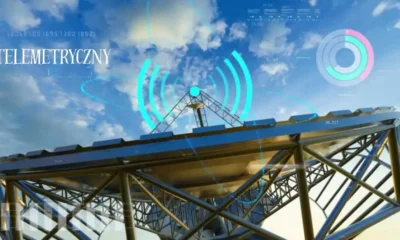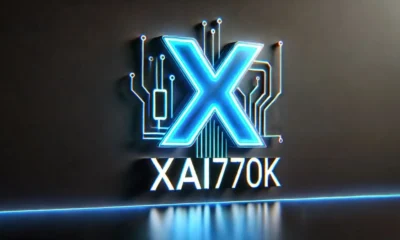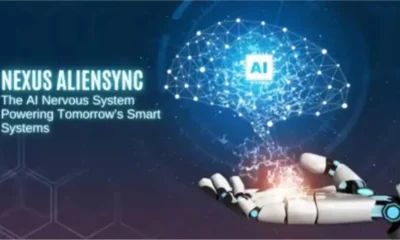AI
IP2 Network: AI-Powered Routing for Next-Gen Internet
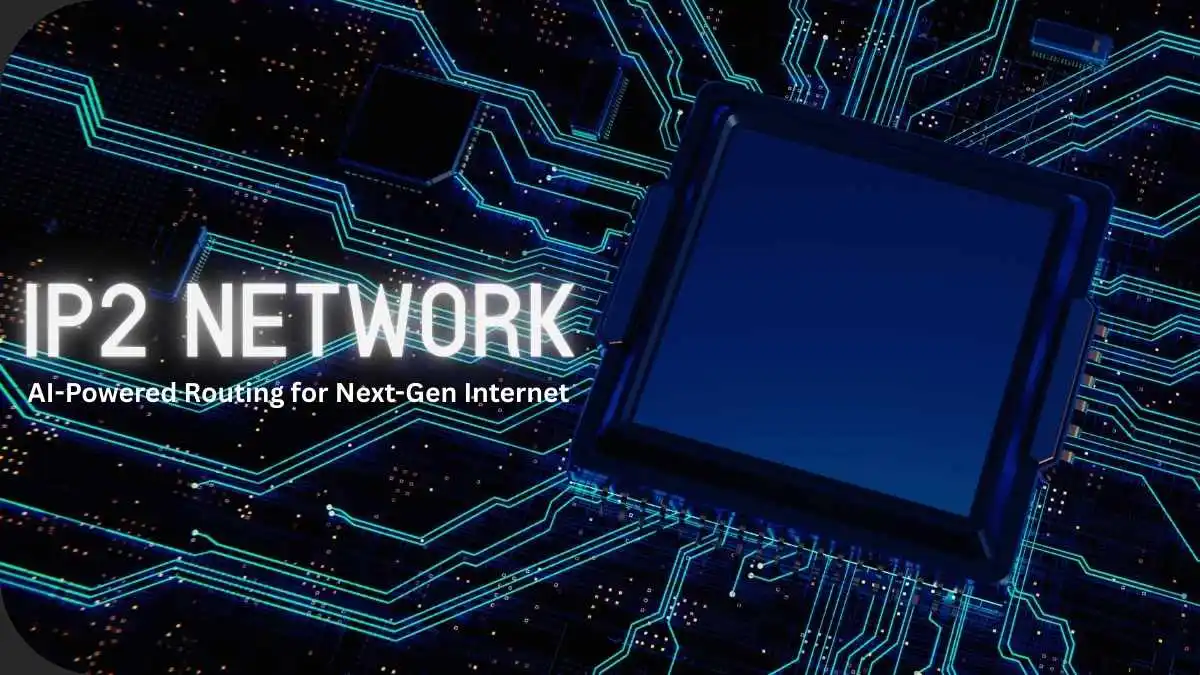
IP2 Network combines AI-driven routing and decentralized peer-to-peer architecture to overcome IPv4 and IPv6 limitations, delivering scalable, secure, and efficient connectivity for future applications like IoT, 5G, and Web3.
Introduction
The digital economy is rapidly evolving, and with it, the demand for faster, more secure, and scalable networking solutions is increasing. While IPv4 and IPv6 have served as the foundation of internet connectivity for decades, they come with inherent limitations. Rising concerns around scalability, latency, congestion, and centralization have led to the exploration of next-generation alternatives. One such innovation is the IP2 Network, a decentralized, AI-driven networking platform designed to reshape how data moves across the internet.
What Is IP2 Network?
IP2 Network is an AI-driven, decentralized routing protocol engineered to overcome the structural weaknesses of IPv4 and IPv6. Instead of relying on static tables or centralized decision-makers, IP2 functions as a living, self-learning system that grows stronger as more nodes participate.
Defining Characteristics:
- AI-Powered Routing: Algorithms monitor live traffic conditions, congestion, and latency across the network, automatically adjusting packet paths in real time.
- Decentralized Peer-to-Peer Framework: Every node can act as a router, reducing reliance on centralized hubs.
- Elastic Scalability: Built to accommodate billions of IoT sensors, 5G devices, and emerging digital infrastructures.
- Security by Design: Eliminates single points of failure, mitigating targeted attack risks.
The Limitations of Traditional Protocols
The internet’s current protocols were never designed to handle the scale and complexity of modern applications:
- IPv4 Exhaustion: With only 4.3 billion addresses, IPv4’s limits forced workarounds like NAT, which complicate routing and slow performance.
- IPv6 Adoption Challenges: Though IPv6 expands address capacity, adoption is slow due to compatibility concerns, uneven global rollout, and high infrastructure costs.
- Rigid Routing Models: Current systems use pre-defined paths that cannot dynamically respond to real-time traffic fluctuations.
- Centralized Bottlenecks: Reliance on large backbone servers creates single points of failure, prime targets for cyberattacks and large-scale outages.
These flaws reveal why a protocol leap, not a patch, is necessary.
AI as the Brain of IP2
IP2’s intelligence comes from its AI-powered routing engine. Rather than waiting for congestion to occur, IP2’s algorithms predict and prevent it. The system operates like a self-adjusting GPS for the internet, rerouting data in milliseconds based on conditions.
Practical outcomes include:
- Real-time streaming without buffering, even during global events like the FIFA World Cup.
- Seamless online gaming experiences, with latency so low that competitive players gain an edge.
- Energy efficiency, as the network reduces redundant hops, saving bandwidth and lowering operational costs.
- Proactive resilience, rerouting traffic before a node or path fails, rather than reacting after damage is done.
This predictive intelligence marks a fundamental shift from static networking to living networks that think and adapt.
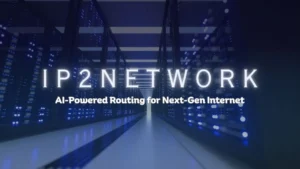
Decentralized Peer-to-Peer Backbone
Unlike traditional internet infrastructure, which leans on ISPs and central backbone nodes, IP2 distributes control across its participants.
- Every node is both a client and a router.
- Redundant pathways ensure data finds a route, even if multiple nodes fail.
- Censorship resistance becomes native, as no single authority can dictate or shut down the system.
This peer-to-peer design echoes blockchain’s philosophy, a democratized, tamper-resistant network that strengthens as it grows.
Key Benefits of the IP2 Network
IP2’s advantages go beyond the typical “faster and more secure” claims. It transforms how the internet is experienced and managed:
- Latency Shrinkage: Think live telesurgery or autonomous vehicles—applications where milliseconds matter. IP2’s real-time routing delivers ultra-low delays.
- Congestion-Free Internet: Instead of bottlenecks during peak hours, IP2 continuously rebalances loads across thousands of available paths.
- Future-Proof Scalability: From 10 billion IoT sensors in smart cities to the rollout of 6G, IP2 is built for exponential growth.
- Self-Healing Security: Cyberattacks lose leverage when there’s no central target. IP2’s distributed intelligence makes takedowns impractical.
Real-World Applications
- Smart Cities: Autonomous traffic systems, energy grids, and emergency networks require uninterrupted, adaptive connectivity. IP2 provides the backbone.
- 5G and Beyond: Ultra-reliable low-latency communication (URLLC) becomes feasible with real-time AI routing.
- Cloud-to-Edge Operations: Faster and more predictable data transfers between cloud hubs and local devices.
- Blockchain and Web3: A censorship-resistant, decentralized backbone perfectly suited for distributed apps and DeFi ecosystems.
Comparison: IPv4 vs. IPv6 vs. IP2
| Feature | IPv4 | IPv6 | IP2 Network |
| Address Space | 4.3B (limited) | Virtually unlimited | Adaptive, self-managing |
| Routing | Static tables | Semi-dynamic | AI-optimized & predictive |
| Architecture | Centralized | Centralized | Decentralized P2P |
| Latency Handling | Poor | Moderate | Real-time optimized |
| Resilience | Weak | Stronger | Self-healing, distributed |
Challenges and Considerations
While IP2’s vision is groundbreaking, adoption won’t be seamless:
- Adoption Resistance: Enterprises and ISPs may hesitate to abandon entrenched IPv4/IPv6 infrastructure.
- Interoperability Requirements: Transitional bridges between IP2, IPv4, and IPv6 must be seamless to prevent fragmentation.
- Regulatory Uncertainty: Governments may push back against decentralized control due to oversight limitations.
- Deployment Costs: Early rollouts will require significant compute and node resources.
These hurdles underscore that IP2 is evolutionary, not plug-and-play.
Industry Perspective
The IEEE Communications Society (2023) notes that the fusion of AI and decentralized networking is poised to be a cornerstone of next-gen internet infrastructure. Their findings show that adaptive routing powered by machine learning could cut latency by up to 40% in large-scale tests, validating IP2’s design approach.
FAQs
Q1: How does IP2 differ from IPv6?
IPv6 solves address scarcity but retains centralized, semi-dynamic routing. IP2 not only adapts routes in real time but also decentralizes the architecture for resilience and security.
Q2: Will IP2 replace existing internet protocols?
Not immediately. IP2 will run alongside IPv4/IPv6 during a transition phase, ensuring interoperability. Over time, it could evolve into the dominant backbone.
Q3: Can IP2 really improve cybersecurity?
Yes. By removing central chokepoints and adding AI-driven threat prediction, IP2 reduces the likelihood of coordinated takedowns and makes intrusion detection proactive.
Conclusion
The IP2 Network is not just another protocol; it’s a rethinking of the internet itself. By merging AI-driven predictive routing with a peer-to-peer backbone, it overcomes the bottlenecks, vulnerabilities, and limitations of IPv4 and IPv6.
For enterprises, ISPs, governments, and innovators, IP2 represents a strategic leap forward. Its relevance will only grow as smart cities expand, 5G matures, and Web3 economies demand a resilient digital fabric.
-

 BIOGRAPHY7 months ago
BIOGRAPHY7 months agoBehind the Scenes with Sandra Orlow: An Exclusive Interview
-

 HOME1 year ago
HOME1 year agoDiscovering Insights: A Deep Dive into the //vital-mag.net blog
-

 HOME1 year ago
HOME1 year agoSifangds in Action: Real-Life Applications and Success Stories
-

 BIOGRAPHY1 year ago
BIOGRAPHY1 year agoThe Woman Behind the Comedian: Meet Andrew Santino Wife

